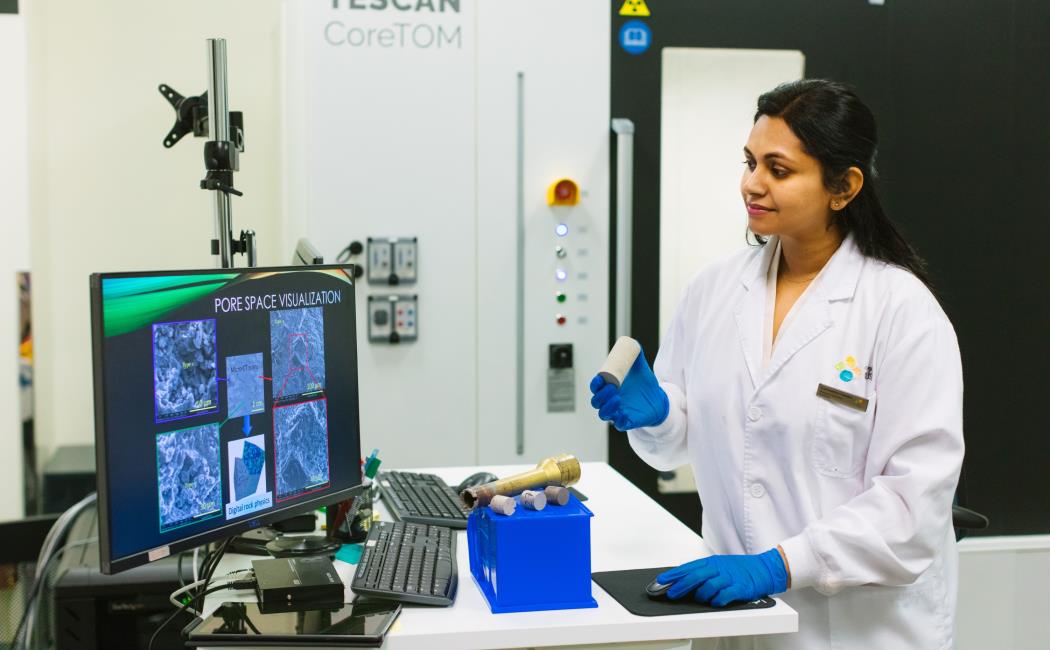How studying ancient rocks may help to guide us toward a low-carbon-energy future.
Looking through a microscope at samples of Jurassic carbonate rock, millions of years old, you wouldn’t believe the fascinating things I see there. Carbonate rocks are special, not only in the enigmatic way that they form, but in their beautiful complexity. Studying them up close is one of my favorite parts of my job.
The essence of my work at the Al-Naimi Petroleum Engineering Research Center is characterizing geomaterials for subsurface applications. Traditionally, the main application of this work is for analyzing fossil fuel reservoirs. We would assess how much hydrocarbon energy is in a reservoir, and where, and then determine the best way to extract it safely and economically.
As the world moves to renewable energy sources, I am eager to transition into sustainable-energy research. Today, in the context of KAUST’s Circular Carbon Initiative, I apply my skills and knowledge toward a low-carbon-energy future. Applications of my work include carbon capture, utilization and storage, and geological storage of alternative fuels, such as hydrogen.
Visiting KAUST for the first time, it was clear to me that this university could provide an opportunity like no other to carry out this work. I am grateful to have access to the broad range of equipment we have at the Research Center and KAUST’s central laboratories. The types of tools we use range from x-ray CT scanners, where we can visualize fluid flow through porous media, to high-resolution scanning and transmission electron microscopes. In the photo, you can see on the computer screen how we combine data from different tools to study our samples.
Read more at KAUST Insight.
